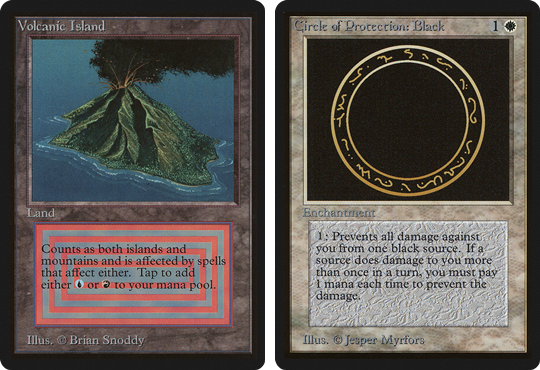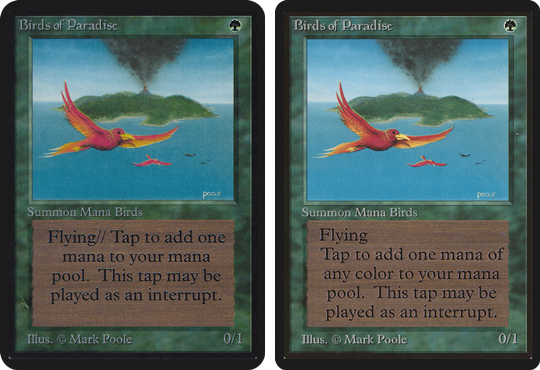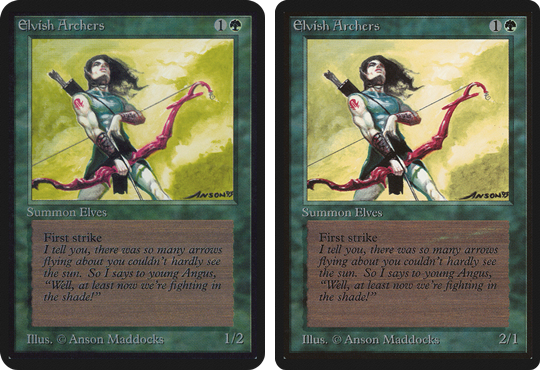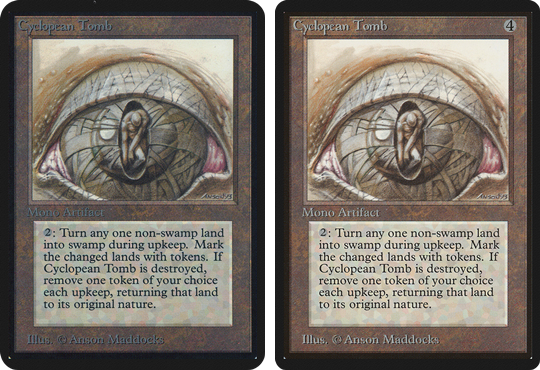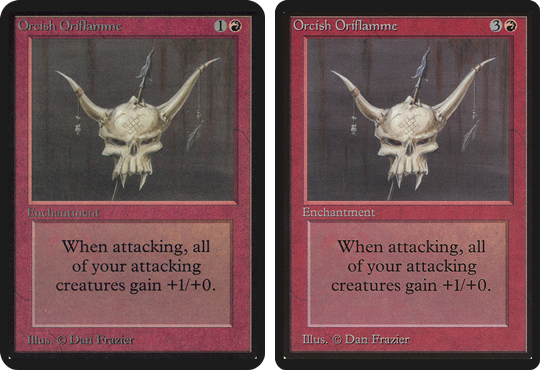Welcome to another edition of “This Day in Magic History.” Today, we’ll take a look at the release of Limited Edition Beta, which came out on Oct. 4, 1993. Beta is often overlooked because it is mostly just a reprint of Limited Edition Alpha. However, there are actually some significant differences between the two sets! In this article, I’ll discuss why Beta was printed and how it impacted the earliest days of Magic.
Why print Beta?
Magic was a smash hit from the very beginning. While many cards were printed for the game’s Aug. 5, 1993 release, no one anticipated the game would see such success right out of the gate. It almost immediately sold out everywhere the game was sold, and it suddenly became clear Wizards of the Coast needed to print more cards! So, plans were put in motion for a second print run. That eventually became Limited Edition Beta.
While we call the sets Alpha and Beta today, they didn’t actually carry those names, originally. They were simply the first and second print run for the game. The names Alpha and Beta did ultimately stick, though, and even Wizards of the Coast refers to these sets by those names.
While Beta was largely a reprint set, there were some significant differences between the first and second printing. Most of these changes come down to fixing mistakes that were made in Limited Edition Alpha.
Fixing Alpha’s Mistakes
The set even contained two cards that weren’t in Alpha: Volcanic Island and Circle of Protection: Black. These cards were meant to appear in Alpha, but they were left out by mistake.
These are the only two cards in Beta that had never been printed before. Obviously, as one of the original dual lands, Volcanic Island has gone on to be an incredibly important card in Magic, and it might not exist at all without Beta!
Alpha cards also famously had several errors that Beta corrected. Some of these errors were simply typographical and did not affect the functionality of the card. For example, the Alpha version of Birds of Paradise featured two forward slashes after “Flying.” The Beta version of the card eliminated this error in the text box.
However, some of these other errors were more problematic, as they actually impacted how the card functioned! Let’s look at a few examples of these. The Alpha version Elvish Archers was printed as a 1/2 with First Strike when the designers intended for it to be printed as a 2/1! This gave Elvish archers a significant power up!
In Alpha, Cyclopean Tomb was printed with no casting cost! In Beta, it was given a casting cost of 4.
Orcish Oriflamme has a casting cost of 1R in Alpha, but this was corrected to 3R in Beta. This significantly weakened the card.
However, the fact that different versions of these cards existed was a pretty big problem in the early days of competitive Magic. In 1993, Wizards decided players should be able to use the card the way their copy was printed. In other words, people could play with cards with the exact same name and art, but they weren’t actually the same card!
This most famously came up at the first competitive Magic event that was formally sanctioned by the DCI. A report from the finals of that event has survived, and on turn three, Alex Parrish tapped two mana to cast his Orcish Oriflamme.
In 1994, this problem was remedied by banning some of the cards that had different functionality depending on the printing of the card – including Orcish Oriflamme! Later in 1994, the DCI simplified things by simply declaring which copy of the card was correct, and those cards were unbanned.
Cutting Corners
Beta cards also looked slightly different than the cards from Alpha. One of the main ways to tell the difference between an Alpha and Beta card is to look at the card’s corners.
Alpha featured more rounded corners than Beta. This difference is the result of a change in the printing process. The Belgian company “Carta Mundi” was the printer Wizards of the Coast used at the time, and with the increased demand, they decided to make the cards slightly smaller so more cards could be printed more quickly. The corners of Magic cards still look the same today!
End Step
I hope this article showed you that Beta deserves a little bit of attention, too, even if it is just a reprint set! It introduced two brand new cards, fixed the many errors that had appeared in Alpha and even introduced the card corners that we know today.

Jacob has been playing Magic for the better part of 24 years, and he especially loves playing Magic’s Limited formats. He also holds a PhD in history from the University of Oklahoma. In 2015, he started his YouTube channel, “Nizzahon Magic,” where he combines his interests with many videos covering Magic’s competitive history. When he’s not playing Magic or making Magic content, he can be found teaching college-level history courses or caring for a menagerie of pets with his wife.


